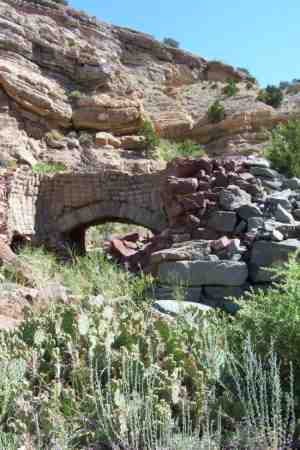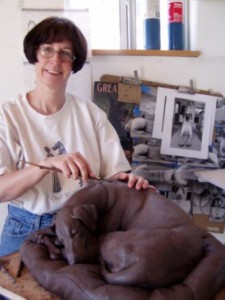Brief by Central Staff
Roadside Attractions – September 2004 – Colorado Central Magazine
As Colorado mines go, the Lost Mine above Wellsville was both typical and unusual. Typical in that it wasn’t very big and it ran for only a few years; unusual because it produced manganese and tungsten, rather than gold, silver, coal, lead, zinc, or molybdenum.
Now the mine, along with the ruins of a nearby lime kiln, is a tourist attraction – although, as the saying goes, “getting there is half the fun,” and the trip from Salida to the mine, in a Pinzgauer four-wheel-drive, sometimes feels like a roller-coaster ride.

The actual tour, as opposed to the ride, starts with the old lime kilns just above the railroad tracks. Lime (calcium oxide) is still an important industrial chemical, but it was part of daily life a century ago. Instead of buying paint, people often mixed their own whitewash, and lime was a major component.
Most privies held a bucket of lime for “sweetening” the pit after a deposit. Lime was a vital ingredient in mortar and plaster back when people mixed their own.
Thus any growing town offered a ready market for lime, and Salida was no exception in 1895 when a local lumberyard opened a limestone quarry and built a kiln at its base. A limestone kiln is a fairly simple structure – some walls up to 25 feet high, with some holes in the side to regulate the draft, and a hole out the bottom for shoveling out the lime.
The kiln is filled with alternating layers of fist-sized limestone (mainly the mineral calcite, CaCO3) and fuel (piñon for these kilns). Start the fuel burning, and in time, the heat drives off the carbon dioxide (CO2) and leaves quicklime (CaO), which can be converted to slaked lime (Ca(OH)2) just by adding water. From time to time, as the fire burns, the lime is removed from the bottom of the kiln. It must have been hot, dusty, hard work.
This quarry and kilns operated off and on until 1935. That’s about the time that cement mortar replaced lime mortar. Cement mortar works better with hard brick, while lime mortar remains more flexible and works better with soft brick – like the local Salida brick in wide use before then, which was so soft that much of it got covered with stucco (which can also be made with lime).
The nature of Salida brick and related industrial sites is a topic worth further exploration, but the limestone quarry is just a small part of the Lost Mine tour.
In 1916, W.H. Boyer, who worked at the lime kilns but prospected in his spare time., found an outcrop of manganese ore. Manganese is used to harden steel and there was a big demand then, on account of World War I. He hired miners and drove a 150-foot tunnel to intersect the vein. Boyer also got a generous offer for the mine, which inspired him to get a more thorough assay – which revealed tungsten, another steel hardener in great demand during wartime. That inspired a flurry of prospecting in the hills east of Salida.
The end of World War I on Nov. 11, 1918, might have been good news for most people, but peace was hell for the mining industry – especially producers of metals used to harden steel for armor and artillery. Molybdenum dropped from $1.48 per pound in 1918 to 21¢ in 1922, and the fledgling Climax Mine halted production. Domestic manganese ore production dropped from 342,573 tons in 1918 to 15,155 in 1921, and tungsten concentrate production fell from 2,924 tons in 1917 to 3 tons in 1921.

The Lost Mine was one of the casualties; production halted in 1919, and it saw no activity until this spring, when Salida entrepreneur Monty Holmes, who had acquired the old claim as a potential building site, decided to make it a tourist attraction – one of only about a dozen underground mine tours in Colorado.
This one is pretty low key. After arriving at the mine, you don a hard hat, take a light, and walk back, ducking for the occasional low overhead timber. The walls are covered with unusual crevices, crystals and phosphorescent materials, and it’s cool when the lights are turned off, as dark as dark can get. You get to learn about stulls and stopes, and examine how mining was done before mechanization arrived underground. Just as interesting is what remains of the transport system at the mine portal – a system of chutes to move ore bags down the hill to the railhead.
For the big picture of the industry, the National Mining Museum and Hall of Fame in Leadville is about as good as it gets, and its Hard Rock Mine Replica is so realistic that you expect the floor to shake from blasting somewhere nearby. But to really go underground, you need to go into a mine, and that’s what this tour is all about.


